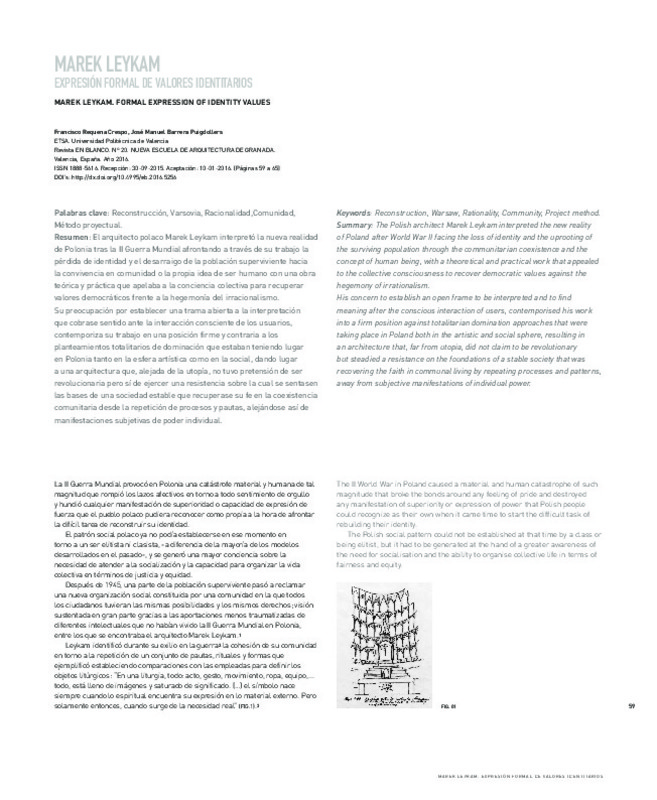JavaScript is disabled for your browser. Some features of this site may not work without it.
Buscar en RiuNet
Listar
Mi cuenta
Estadísticas
Ayuda RiuNet
Admin. UPV
Marek Leykam. Expresión formal de valores identitarios
Mostrar el registro completo del ítem
Requena Crespo, F.; Barrera Puigdollers, JM. (2016). Marek Leykam. Expresión formal de valores identitarios. EN BLANCO. Revista de Arquitectura. 8(20):59-65. https://doi.org/10.4995/eb.2016.5256
Por favor, use este identificador para citar o enlazar este ítem: http://hdl.handle.net/10251/70491
Ficheros en el ítem
Metadatos del ítem
| Título: | Marek Leykam. Expresión formal de valores identitarios | |
| Otro titulo: |
|
|
| Autor: | Requena Crespo, Francisco | |
| Entidad UPV: |
|
|
| Fecha difusión: |
|
|
| Resumen: |
[EN] : The Polish architect Marek Leykam interpreted the new reality
of Poland after World War II facing the loss of identity and the uprooting of
the surviving population through the communitarian coexistence and ...[+]
[ES] El arquitecto polaco Marek Leykam interpretó la nueva realidad de Polonia tras la II Guerra Mundial afrontando a través de su trabajo la pérdida de identidad y el desarraigo de la población superviviente hacia la ...[+]
|
|
| Palabras clave: |
|
|
| Derechos de uso: | Reconocimiento - No comercial (by-nc) | |
| Fuente: |
|
|
| DOI: |
|
|
| Editorial: |
|
|
| Versión del editor: | https://doi.org/10.4995/eb.2016.5256 | |
| Tipo: |
|









